
How the Consortium Blockchain Works
September 25, 2019
Hyperledger is an innovative form of global collaboration in the business industry, where the main purpose is to create frameworks and tools for advanced application of blockchain-based distributed ledgers on any scale for different businesses. In short, frameworks are providing different sets of solutions for implementing particular tasks.
The Hyperledger open-source platform development was proposed by Linux Foundation in December 2015 (the same year the Ethereum blockchain launched). In March 2016, ten members joined the project; today, there are 270 contributing organizations from very different sectors and horizons: from banks, financial services firms to IT companies and startups. The two biggest contributors are IBM and Intel.
Above that, Hyperledger is an ecosystem where communities of software developers are building blockchain frameworks and tools. It is a “hub” for cross-industry cooperation that focuses on solving business issues. A year ago, we have done an overview of the Hyperledger ecosystem. Then, Hyperledger hosted 10 projects with 3.6 million lines of code and close to 28,000 participants who have come to 110+ meetups around the world. Nowadays, there are 13 projects:

It’s not a surprise that Hyperledger framework led by IBM, namely Hyperledger Fabric, has got the most attention and support from the tech giant. Yet other frameworks also has shown us some results too.
ScanTrust, the company that provides secure QR codes for the labels as well as the software platform, has implemented blockchain-enabled traceability using Hyperledger Sawtooth. The first case of tracking products was implemented with coffee packages. The architecture of the solution involves a 3-node Hyperledger Sawtooth cluster; each runs a “coffee chain” Python transaction processor. ScanTrust combines information provided by the brand (like nutritional values) with data from the blockchain (events in the supply chain) and shows it to the consumers in their custom application.
How ScanTrust Integrated Hyperledger Sawtooth into Platform
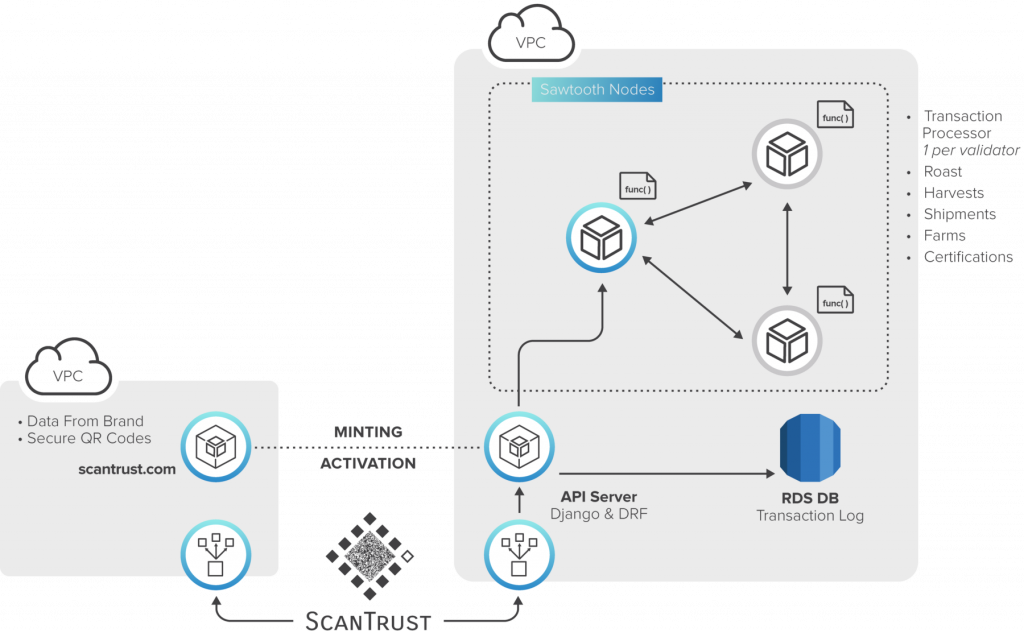
Source: https://www.hyperledger.org/resources/publications/scantrust-case-study
Cambio Coffee implemented ScanTrust’s unique QR codes on their packs in May 2018. In the future, these two companies want to expand to other blockchain-supported initiatives, like “Tip your farmer.”
The Verifiable Organizations Network (VON), started by the governments of Canadian provinces British Columbia and Ontario, set out to explore how blockchain technology could reduce red tape. The original task was to find a way to navigate citizens through the services from local, provincial, or federal governments — this how the Orgbook BC emerged.
When working on the problem, the project team found the Hyperledger Indy, which was ideal for VON thanks to supporting self-sovereign IDs and enabling business people to control who sees what information. Now the Orgbook BC functions in a beta mode. Any government service can issue digital licenses or permits for businesses like Mary’s Eco Tours. And anyone can verify these digital licenses and permits by checking the OrgBook for their jurisdiction.
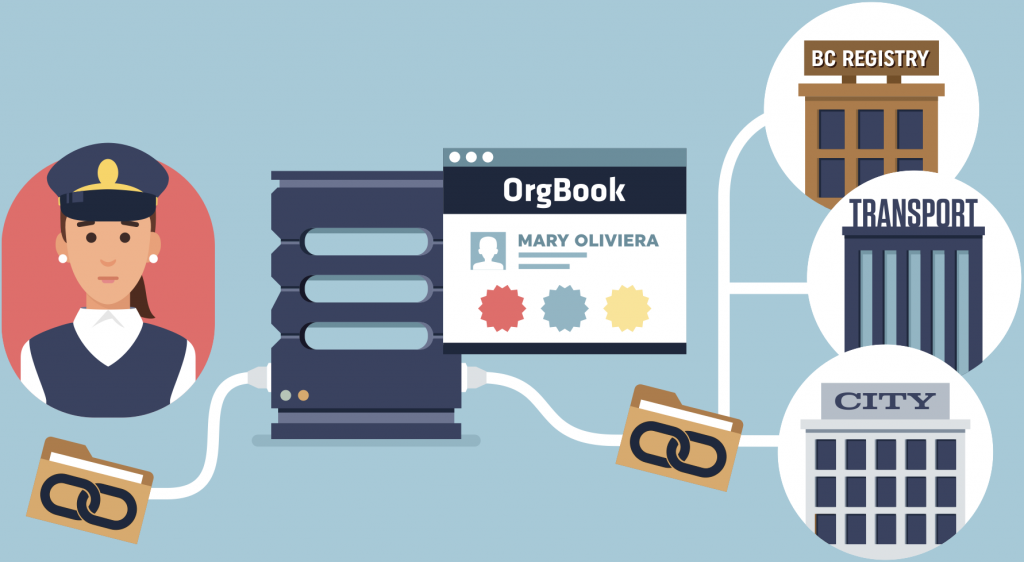
Source: https://www.hyperledger.org/resources/publications/orgbook-case-study
Below is an example of how the VON can operate, (1) Mary, registers her eco-tour business and receives a digital incorporation credential. (2) Now Mary needs a loan for a new tour bus. When the bank’s online loan service asks for proof of incorporation, she presents her digital incorporation credential. Using Hyperledger Indy-based software, the bank verifies Mary’s credential and (3) completes the loan transaction.
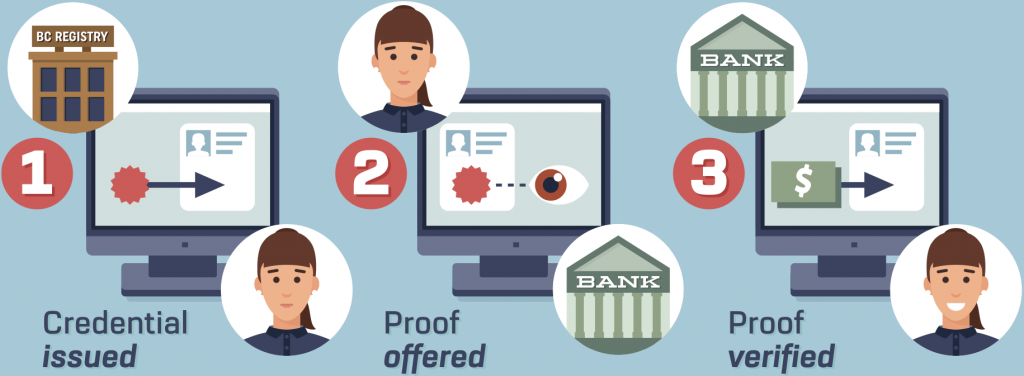
Source: https://www.hyperledger.org/resources/publications/orgbook-case-study
Back to the goods tracking, Walmart, together with IBM, have implemented Hyperledger Fabric for tracking products. Today Walmart tracks 25 products and claims to monitor the leafy greens using blockchain in 2019.

The first two products to track were pork from China and mangoes in the US. For pork in China, it allowed uploading certificates of authenticity to the blockchain, bringing more trust to a system where that used to be a severe issue. And for mangoes in the US, the time needed to trace their provenance went from 7 days to 2.2 seconds.

Similarly to that, food tracing powered by Hyperledger Fabric in collaboration with IBM was launched at Carrefour. Currently, the stores track meat, milk, and fruit and plan to extend tracing to more products. Recently, the Carrefour officials stated that monitoring the origin of products, which is implemented using blockchain, boosts sales of some products. More than that, as the Carrefour’s blockchain project manager, told Reuters at a conference: “You are building a halo effect — ‘If I can trust Carrefour with this chicken, I can also trust Carrefour for their apples or cheese.”
The UK-based Circulor created a system that ensures tantalum mineral is mined, transported, and processed under approved conditions with an unbroken chain of custody. Powered by a permissioned blockchain built on Hyperledger Fabric, the system uses facial recognition and QR codes to deliver mine-to-manufacturer traceability of the resource. The trace system went live in three mines in 2018. In the future, Rwanda and Circulor plan to bring more mines onto the system. And Circulor is keen to extend the blockchain system to cover other minerals and other countries.
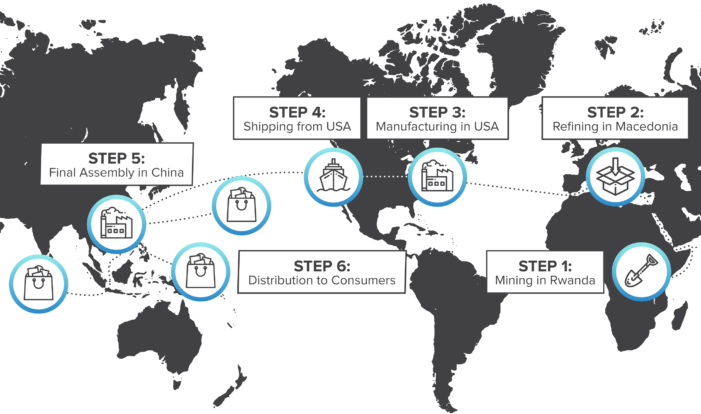
Source: https://www.hyperledger.org/resources/publications/tantalum-case-study
On June 11 this year Visa has announced that its blockchain-powered business-to-business payments service went live. Although the service is not fully built on blockchain, it involves certain elements of distributed ledger as they allow to have more payment information.
Originally, the company was cooperating with the startup Chain, that played a major role in the early stages of the project. Later, Visa turned to Hyperledger Fabric, implementing it in partnership with Bottomline, FIS, and IBM. The service has been designed to help Visa’s corporate clients sidestep the slow correspondent banking network, opening up near-instant international payments using a system in part powered by DLT.
This is not the full list of implemented projects, but the most interesting ones. Despite the cases described are not yet showing the mass adoption of neither blockchain technology or Hyperledger frameworks, it is a good start for the early days of blockchain as these solutions were implemented and we anticipate the results of their economic and essential viability being proved or refuted.
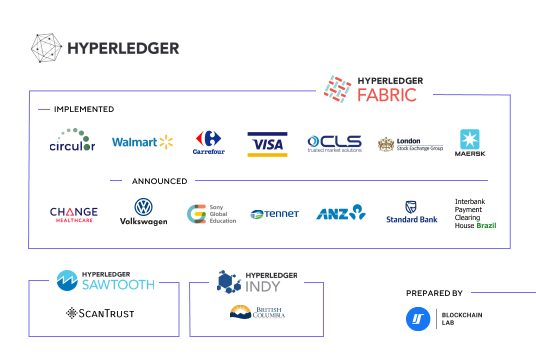
The most recent announcement has been made by Interbank Payment Clearing House in Brazil – they have announced the launch of blockchain ID system “Device ID” based on Hyperledger Fabric framework. The system’s purpose is to verify digital signatures using mobile devices. So far, nine banks confirmed using the system. How things will go with it, we will see in the nearest future.
There are other projects announced we are still waiting to perform results. Among them:
Among all blockchain-powered projects, most are related to goods and product traceability as well as to the banking and finance industry. Other cases fall into the categories of the energy sector, utilities, and logistics and are more challenging as they involve various parties. As a result, blockchain implementation requires a complex transformation of the existing infrastructural and legal mechanisms.
From all Hyperledger frameworks, the biggest support received the framework led by IBM. Given the unlimited resources, IBM proposes projects driven by Hyperledger Fabric for as many businesses applications as they can.
So far, only a handful of projects saw their implementation with blockchain technology, in particular, Hyperledger frameworks. However, the mere fact that some of them are already functioning causes a positive network effect on the industry.

